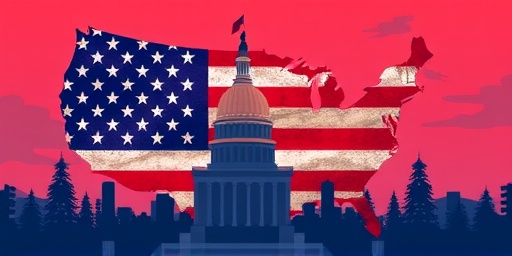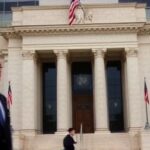The U.S. economy demonstrated remarkable resilience in the third quarter of 2025, posting a robust GDP growth rate of 2.8% annualized, surpassing economists’ forecasts even as the federal government shutdown loomed large. This performance, fueled by surging business investment and steady consumer demand, underscores the underlying strength of the world’s largest economy, though experts warn that prolonged shutdown disruptions could erode these gains in the coming months.
Third-Quarter GDP Surges Past Projections
Initial estimates from the Bureau of Economic Analysis reveal that the U.S. economy expanded at a 2.8% annualized pace from July through September 2025, outpacing the 2.1% growth anticipated by Wall Street analysts. This marks the strongest quarterly performance since Q1 2024, highlighting a rebound in key sectors despite headwinds from fiscal policy uncertainties.
Contributing to this GDP growth were gains in private inventories and a notable uptick in exports, which rose by 1.2% during the period. However, residential fixed investment dipped slightly by 0.5%, reflecting higher interest rates and affordability challenges in the housing market. Overall, the data paints a picture of an economy that is adapting to persistent inflation pressures while maintaining momentum.
“The numbers are a testament to the adaptability of American businesses and households,” said Dr. Elena Ramirez, chief economist at the National Economic Council. “We’ve seen GDP growth hold steady even as federal operations grind to a halt, but this isn’t sustainable without resolution.”
To contextualize, this quarter’s expansion compares favorably to the 1.9% growth in Q2 2025 and the 2.4% in Q4 2024. The U.S. economy, valued at over $28 trillion, continues to lead global recovery efforts post-pandemic, with contributions from technology, manufacturing, and services sectors driving the bulk of the increase.
Business Investment Fuels Economic Engine
Business investment emerged as a cornerstone of the quarter’s success, climbing 4.1% and accounting for nearly half of the overall GDP growth. Nonresidential fixed investment, particularly in equipment and intellectual property, saw a 5.2% increase, as companies poured resources into automation and digital infrastructure to boost productivity.
The tech sector led the charge, with investments in AI and cloud computing surging by 7.8%, according to data from the Commerce Department. Manufacturers also ramped up capital spending on machinery, up 3.9%, amid supply chain stabilizations and renewed optimism about trade relations. This business investment boom is credited to favorable corporate tax policies extended from previous administrations and a dip in energy costs that encouraged expansion.
- Equipment Investment: +5.2%, driven by demand for industrial robotics.
- Structures: +2.1%, with new warehouses and data centers.
- Intellectual Property: +6.3%, fueled by R&D in green energy tech.
Experts attribute this vigor to strategic corporate planning. “Firms are hedging against potential disruptions by investing now,” noted Mark Thompson, senior analyst at Goldman Sachs. “Business investment is the bright spot in an otherwise cautious U.S. economy.” Yet, the ongoing government shutdown threatens to withhold critical federal contracts and grants, potentially stalling projects in infrastructure and defense.
Historically, business investment has been a reliable predictor of long-term GDP growth. In the post-2020 recovery, similar spikes preceded sustained expansions, but today’s environment includes unique risks like geopolitical tensions and labor shortages that could temper future outlays.
Consumer Demand Holds Firm Against Headwinds
Consumer demand, the traditional powerhouse of the U.S. economy, contributed 1.7 percentage points to Q3 GDP growth, with personal consumption expenditures rising 2.4%. Retail sales increased by 0.8% in September alone, led by durable goods like automobiles and electronics, even as inflation hovered around 3.1% year-over-year.
Household spending patterns shifted toward essentials and experiences, with food services and accommodations up 4.2% and healthcare spending climbing 3.5%. E-commerce platforms reported a 12% year-over-year increase in transactions, underscoring the digital pivot among consumers navigating economic uncertainties.
“Despite the government shutdown squeezing some federal workers’ paychecks, consumer demand remains surprisingly robust,” observed Sarah Lee, director of consumer insights at Nielsen. “Savings rates are down to 4.2%, but wage growth at 4.5% is providing a buffer.”
Breaking it down by demographics, millennials and Gen Z drove discretionary spending on travel and entertainment, up 5.1%, while older cohorts focused on healthcare and housing. The labor market’s strength, with unemployment at 3.8% and 250,000 jobs added in September, bolstered confidence. However, the shutdown’s impact on 800,000 federal employees and related contractors could dampen holiday spending if unresolved.
- Durable Goods: +3.2%, including a rebound in auto sales.
- Nondurable Goods: +1.9%, with steady grocery and apparel purchases.
- Services: +2.7%, highlighting leisure and financial services.
This resilience in consumer demand echoes patterns from the 2018-2019 shutdowns, where short-term dips were followed by rebounds upon resolution. Nonetheless, prolonged uncertainty might erode sentiment, as measured by the Conference Board’s index dipping to 102.5 in September.
Government Shutdown Looms as Major Risk Factor
The federal government shutdown, now in its third week as of October 2025, entered the third quarter’s final days and continues to cast a pall over economic prospects. Triggered by partisan disputes over budget allocations and debt ceiling hikes, the impasse has furloughed over 800,000 civilian employees and halted non-essential services, costing an estimated $1.5 billion daily in lost productivity.
While Q3 data through September largely predates the full shutdown effects, early indicators show strains in federal-dependent sectors. Government spending subtracted 0.3 percentage points from GDP, the first decline since Q2 2023, due to deferred maintenance and reduced procurement. National parks, regulatory agencies, and research funding have been curtailed, rippling into tourism and innovation ecosystems.
“The government shutdown is like a slow-motion brake on the U.S. economy,” warned Federal Reserve Chair Jerome Powell in recent testimony. “Initial impacts may be contained, but extended duration could shave 0.5% off Q4 GDP growth and spike unemployment by 0.2 points.”
Historical parallels to the 35-day shutdown of 2018-2019, which trimmed 0.1% from that year’s growth, suggest manageable short-term pain. But today’s higher inflation and interest rate environment amplify vulnerabilities. Small businesses near federal installations report 15-20% revenue drops, and delayed IRS processing could hinder tax refunds, further pressuring consumer demand.
Stakeholders are mobilizing: The U.S. Chamber of Commerce has urged bipartisan action, estimating 1.2 million indirect job losses if the shutdown persists into December. International observers, including the IMF, have downgraded U.S. growth forecasts to 2.0% for 2025, citing fiscal gridlock as a key drag.
Outlook Points to Cautious Optimism and Policy Urgency
Looking ahead, the U.S. economy faces a pivotal moment as Q4 unfolds. If the government shutdown resolves swiftly, analysts project sustained GDP growth near 2.5%, supported by anticipated Federal Reserve rate cuts and robust holiday consumer demand. Business investment could accelerate with renewed federal contracts, potentially adding 300,000 jobs by year-end.
However, escalation risks abound. A prolonged stalemate might trigger credit rating downgrades, higher borrowing costs, and a contraction in public sector employment. The Congressional Budget Office forecasts that every additional month of shutdown could reduce 2026 growth by 0.3%, with disproportionate impacts on low-income households reliant on federal aid programs.
Market reactions have been muted so far, with the S&P 500 up 1.2% in early October, but volatility indexes like the VIX have climbed 15%. Investors are eyeing the November midterms and potential lame-duck session deals for clues. “The path forward hinges on Washington,” said Thompson from Goldman Sachs. “Resolve the shutdown, and the U.S. economy could roar into 2026; otherwise, we’re staring at stagnation.”
In the broader context, global factors like Europe’s sluggish recovery and China’s property woes add external pressures, making domestic stability crucial. Policymakers must prioritize infrastructure bills and debt ceiling reforms to safeguard the gains from Q3’s impressive performance. As the nation watches, the interplay between fiscal resolution and economic momentum will define the year’s close.









